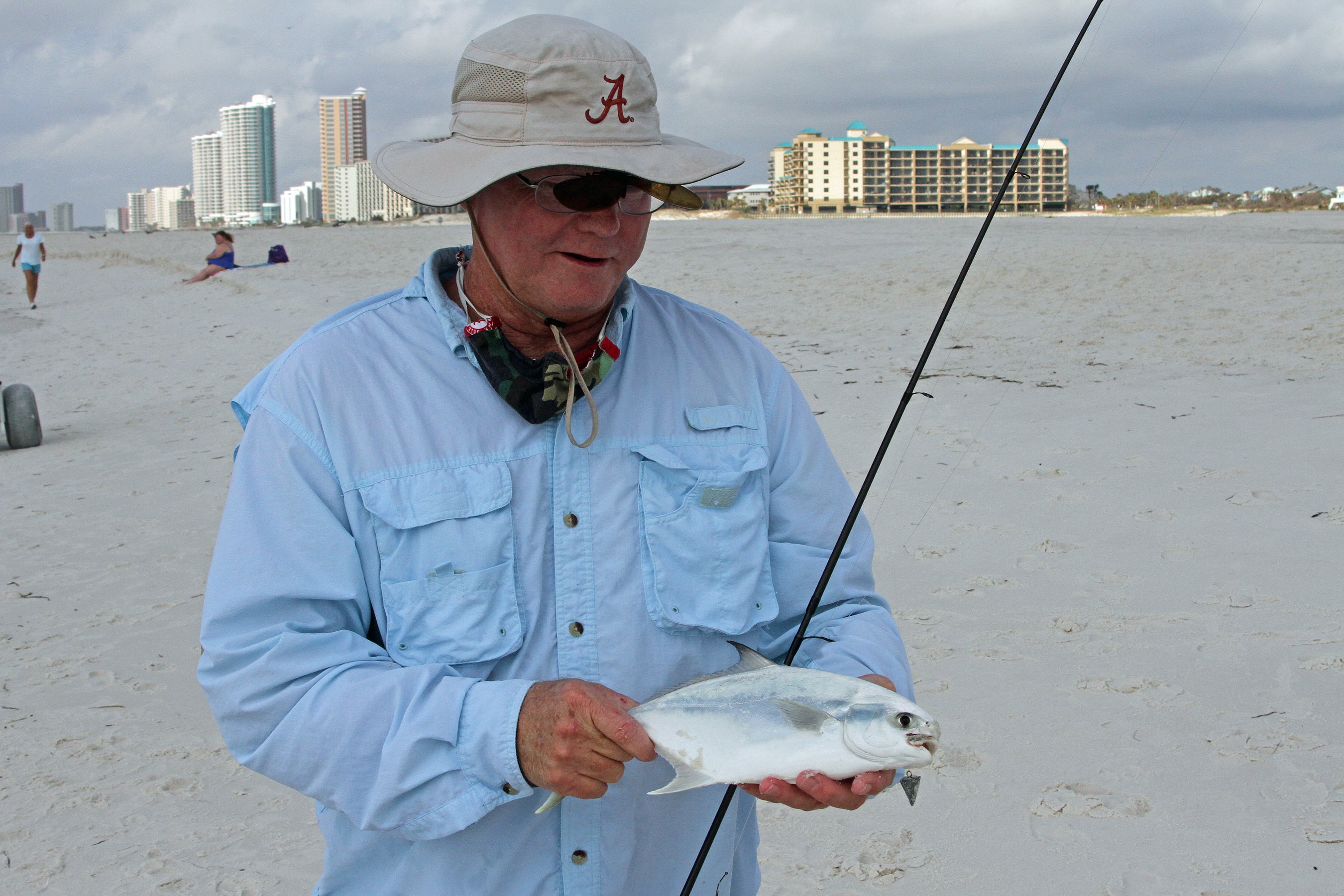By DAVID RAINER, Alabama Department of Conservation and Natural Resources
With a nickname like Pier Pounder, David Thornton of Mobile has seen his favorite pastime disappear with 2020’s double whammy of hurricanes. Hurricane Sally took the Gulf State Park Pier out of commission, and Hurricane Zeta destroyed Cedar Point Pier in Mobile County.
“I guess you can call me the Pier-less Pounder because the only pier open in the Mobile area is the Fairhope Pier, and it’s closed at night because they don’t have any lights,” Thornton said.
However, Thornton has a major backup plan, thanks to Alabama’s beautiful beaches and surf teeming with a variety of fish species.
Thornton said he’s been hooked on fishing in the surf since he was 12, and a trip to Gulf State Park Pier with his buddy, Tom Allenbach, sealed his loved for pier fishing.
“Tom was fishing a live alewife under a float,” Thornton said of the trip to Gulf State Park Pier. “He told me to hold his rod while he caught more bait. I asked him how I would know when I got a bite. He said, ‘You’ll know.’ About that time, I felt a tug and thought I was hung on somebody else’s line. Then the fish took off, stripping drag. It was about a 10 ½-pound king, and that was when I really got hooked on pier fishing.”
But for now, fishing from shore is where Thornton will be until a portion of Gulf State Park Pier is reopened sometime late this winter.
Before Thornton decides where to pursue fish in the surf, he gathers information about weather, water, wind and tide conditions.
“Know what the weather is going to be like with the marine forecast,” he said. “It’s not that I look for any certain conditions; it’s just that I want to know what to expect and adjust. I look at the tide tables. Then I’ll decide where I’m going and what I’m going to fish for based on the conditions.
“Ideal conditions would be 10-15 mph winds either onshore or sideshore with waves 1 to 3 feet. For shore fishing, it’s really better with a little chop on the water. I think it stimulates the fish to bite more readily. Also, you have current flow. If there is a current working over the sandbar, you want to pay special attention to the tide, especially if it’s close to a pass. If it’s too rough or too calm or with very little tidal movement, the fish don’t cooperate as well. If I’m going to fish a neap tide, I’m going to fish close to the pass.”
When Alabama’s tides come off a neap cycle, the tide swings will sometimes reach more than 2 feet from low tide to high tide. That’s when Thornton likes to be fishing the open beaches.
“That tide movement stimulates the bite,” he said. “When I go, I’m looking for a longshore sandbar. The longshore sandbar is usually 100 to 150 yards off the beach. But there are places where the longshore sandbar swings in closer to the shore. The best places are where the sandbar is within casting range. That creates a pinch point where the fish are going to be moving from one trough to the next. When the bar is closer, you can use lighter tackle and target a variety of fish.
“I’d much rather catch a big fish on light tackle and take a long time than catch a small fish on heavy tackle.”
Thornton casts to the inside edge of the sandbar to start the day and adjusts his casts according to the bite.
“The fish tend to feed along the edges,” he said. “They use the sandbars for protection from predatory fish. The area from the shore out to the first bar is where most of the fish live. That old adage is that 90 percent of the fish live in 10 percent of the water. It’s the same in the surf.”
Speaking of light tackle, Thornton truly goes as light as possible. Where some folks show up on the beaches with long rods with 20- to 30-pound line, Thornton fishes with line in a range from 4-pound-test to 15-pound-test. He uses his 10- to -12-foot rods with the 15-pound line for the long casts. He takes his 7-foot rods and light line for fishing closer to the shore. However, anything can bite any of his rigs.
“I’ve hooked 20-pound black drum within 10 feet of the shore, and I’ve caught whiting and pompano out by the sandbar,” he said. “The mistake I see most people make is they’ll cast out as far as they can, pop the rod in a rod holder, plop down in a chair and wait for a fish to bite. If they don’t catch anything, they say the fish weren’t biting that day. Odds are, they overcast the fish. With light tackle, I feel like I have just as much fun catching 14- to 16-inch whiting and an occasional pompano as somebody heaving this heavy tackle and waiting hours between bites.”








